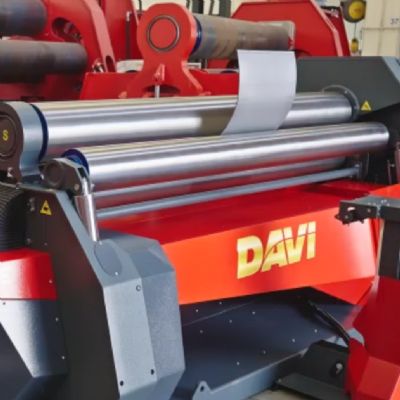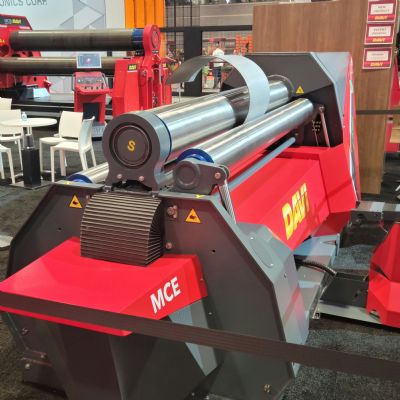“C) Deliberate removal by an employer of an equipment safety guard or deliberate misrepresentation of a toxic or hazardous substance creates a rebuttable presumption that the removal or misrepresentation was committed with intent to injure another if an injury or an occupational disease or condition occurs as a direct result.
“D) This section does not apply to claims arising during the course of employment involving discrimination, civil rights, retaliation, harassment in violation of Chapter 4112 of the Revised Code, intentional infliction of emotional distress not compensable under Chapters 4121 and 4123 of the Revised Code, contract, promissory estoppels or defamation.”
The Ohio State Supreme Court recently saw this as a new approach and took a “fresh look” at the constitutional issues, and decided on March 23, 2010 that the 2005 statute was constitutional and did not “do a with the common law cause of action for employer intentional tort.”
Facts of the Two Cases
In the first case, Stetter et. al. v. R.J. Corman Derailment Services, L.L.C., et. al., the plaintiff, Carl Stetter, sued his employer after receiving broken bones and other injuries when a truck tire he was inflating explosively separated from the rim. He claimed and received worker’s compensation benefits before filing the civil suit alleging that his company knew of the dangers inherent in the workplace and failed to comply with state/federal safety requirements.
In the second case, Kaminski v. Metal & Wire Products Company, Rose Kaminski was working as a press operator at a Salem, OH, metal fabrication manufacturing facility. She operated an automatic press that used a coil feed of rolled steel into the press to produce stamped, flat parts.
In operating the press, Kaminski’s job was to ensure that the coil feed ran smoothly, shut the press down if it jammed, and verified that the stamped pieces met required specifications. When the coil of steel was used up, she would find a supervisor to load a new coil into place with a forklift. When her press ran out of steel one day, she searched for her shift supervisor to load another coil, but was unable to find him. Kaminski enlisted a coworker who had loaded coils in the past to load the new coil. The coworker used the right forklift to lift a coil, which was about 5 ft. tall and weighed about 800 lb.
To properly load the coil onto the press, the coil had to be switched from the right fork to the left fork. To accomplish the switch, the coworker had to lower the coil to the floor, back the forklift a from it, and then pull forward again with the left fork positioned to pick up the coil.
When the coil was off of the fork, it became unsteady. At first the coworker was reluctant to have Kaminski, described as a small woman who was about the same height as the coil, steady the coil in an upright position while he backed a and repositioned it. However, the two eventually agreed that Kaminski would hold the coil because the supervisor was not there and the coworker believed that Kaminski wanted to do it. With Kaminski steadying the coil, the coworker backed the forklift a and then pulled forward. Rather than moving cleanly into the coil’s opening, the fork bumped the coil. Kaminski was unable to control the coil. It wobbled and then fell onto her legs and feet, injuring her.
Kaminski applied for and received worker’s compensation benefits for her injuries. She was unable to return to work as a press operator due to her injuries. After receiving paychecks until March 2006, she eventually was discharged from employment because no other position was available.
Although worker’s compensation benefits were apparently not terminated, two months later Kaminski filed a civil court claim for intentional tort damages.
The 6-1 majority of Ohio Supreme Court found the 2005 tort reform act limiting intentional tort workplace injury claims to be constitutional under the Ohio State Constitution because:
• The legislature, not the courts, is allowed to establish the laws of the state, to set legislative policy, and to change its mind and amend the laws and restrict claims for remedies.
• The 2005 tort reform statute, R.C. 2745.01, still allowed employees to recover for intentional workplace injury torts which result from an employer’s deliberate intent to injure—viewed by the court as the “majority rule” in the United States since only eight states have redefined and broadened “deliberate intent” to mean (the minority rule of employer knowledge) that an injury was “substantially certain to occur.”
• The reform statute did not wipe out or make intentional tort claims an illusory remedy because at least two types of such civil lawsuit from damages claims survived in Ohio—“deliberate removal of an equipment safety guard or deliberate misrepresentation of a toxic or hazardous substance.”
• Ohio’s worker’s compensation system provides a meaningful remedy for workers whose injuries result from employer conduct committed with an intent less than deliberate intent, such as a conduct that is reckless. And an employee can pursue an additional award under the Ohio compensation system when an injury results from an employer’s violation of a specific safety requirement.
What Do the Two Cases Mean for the Future of Intentional Workplace Civil Tort Claims in Ohio?
Now that injured Ohio employees have to prove higher burden of “deliberate intent to injure,” four impacts will likely develop:
1) The number of eligible Ohio intentional tort lawsuits or claims reaching a jury trial will drop dramatically.
2) More injured workers will be forced to accept their worker’s compensation benefits as their sole recovery for workplace injuries as claims against their employer.
3) Ohio intentional tort claims for workplace injuries against employers that do survive these twin case rulings will be the two types of presumed “deliberate intent” as still contained and expressly recognized in the Ohio 2005 Constitutional tort reform statute of R.C. 2745.01(c), namely the following:
“C) Deliberate removal by an employer of an equipment safety guard or deliberate misrepresentation of a toxic or hazardous substance creates a rebuttable presumption that the removal or misrepresentation was committed with intent to injure another if any injury or an occupational disease or condition occurs as a direct result.”
4) Employees as claimants in the worker’s compensation system injured as a result of their employer’s violation of a safety rule may continue to pursue add-on claims for enhanced benefits (an extra 15 to 50 percent of the maximum worker’s compensation award on account of such injury, disease, or death).
Employers would be wise to train and document in safety meetings the reminder to avoid deliberate removal of equipment safeguards needed during operation and from deliberatively misrepresenting the toxicity or hazard of hazardous substances. Also, it’s a good time to remind employees not to “bypass” safeguards or safety devices required for safe operation. MF Technologies: Bending
 Douglas Ehlke
Douglas Ehlke







